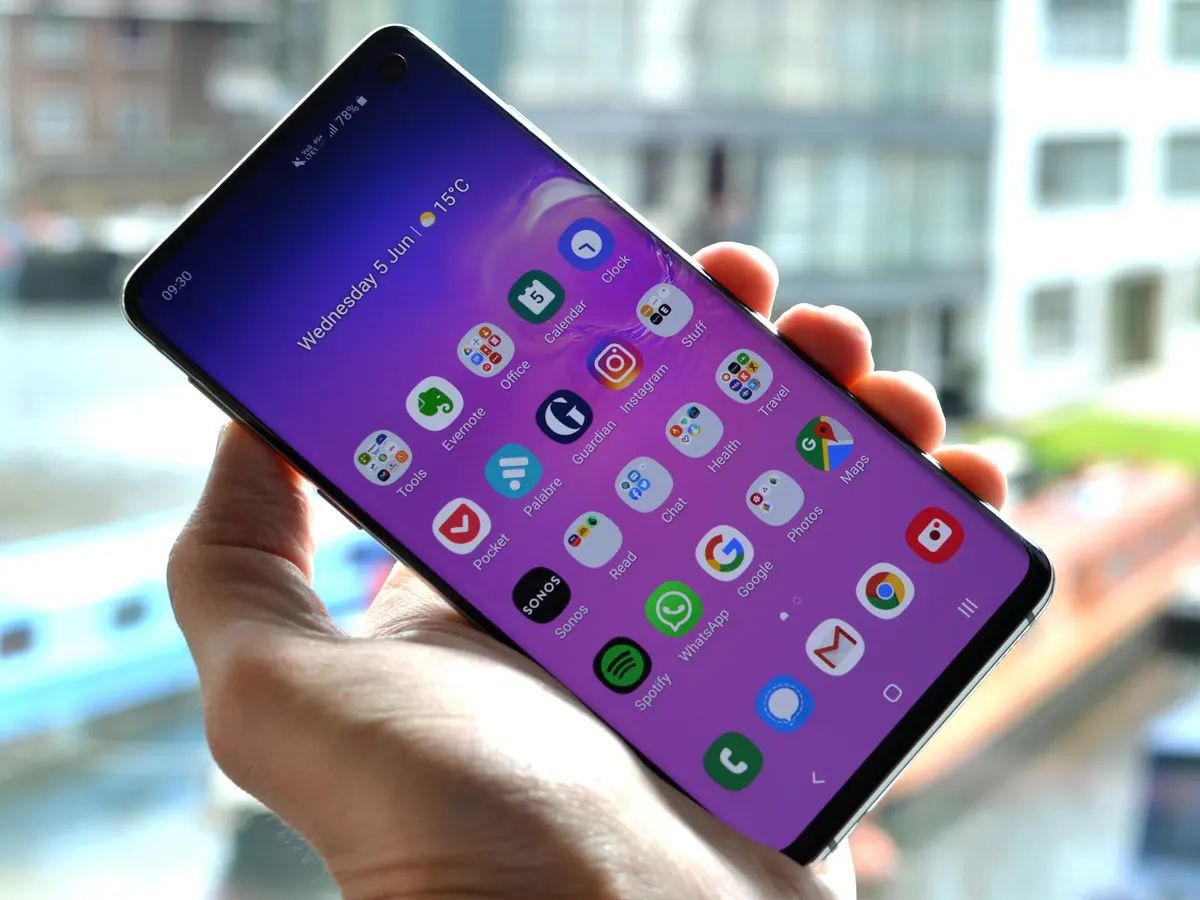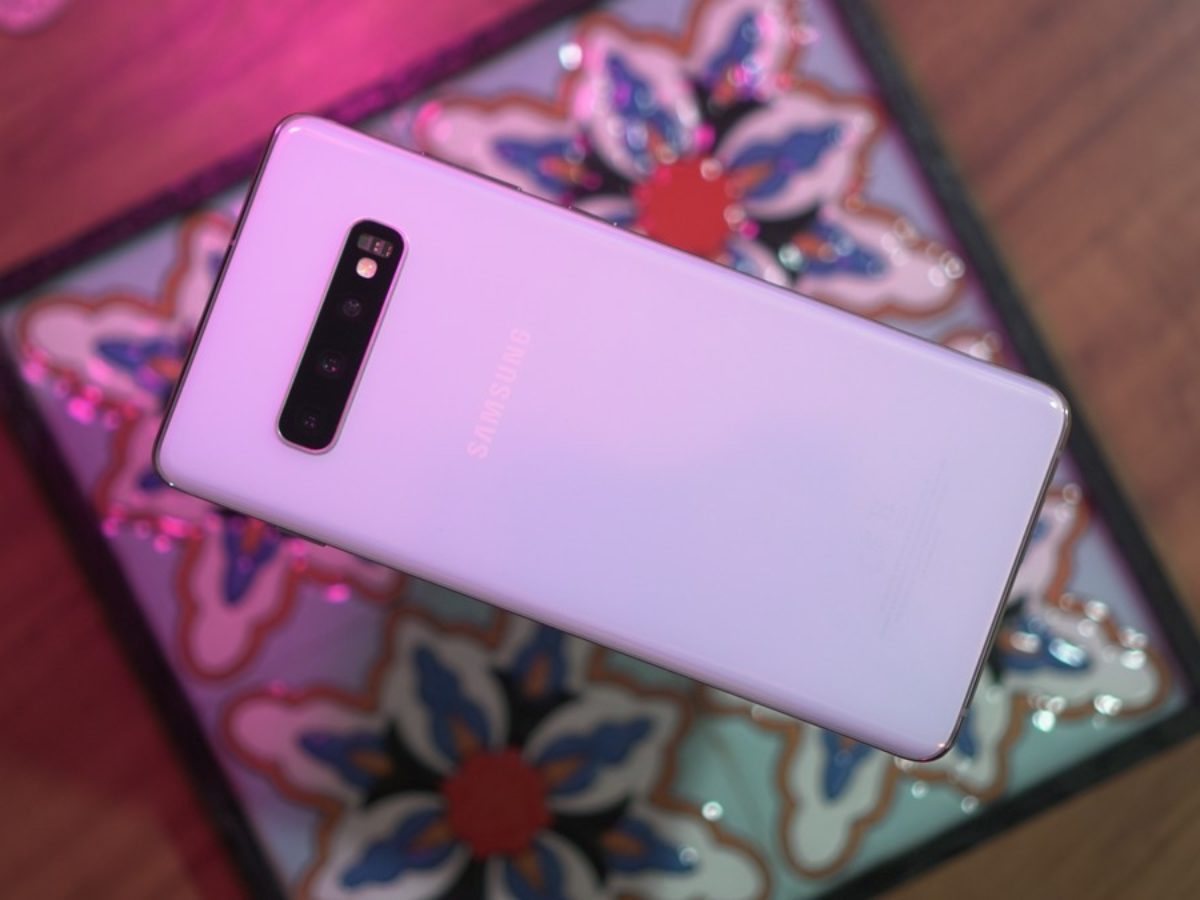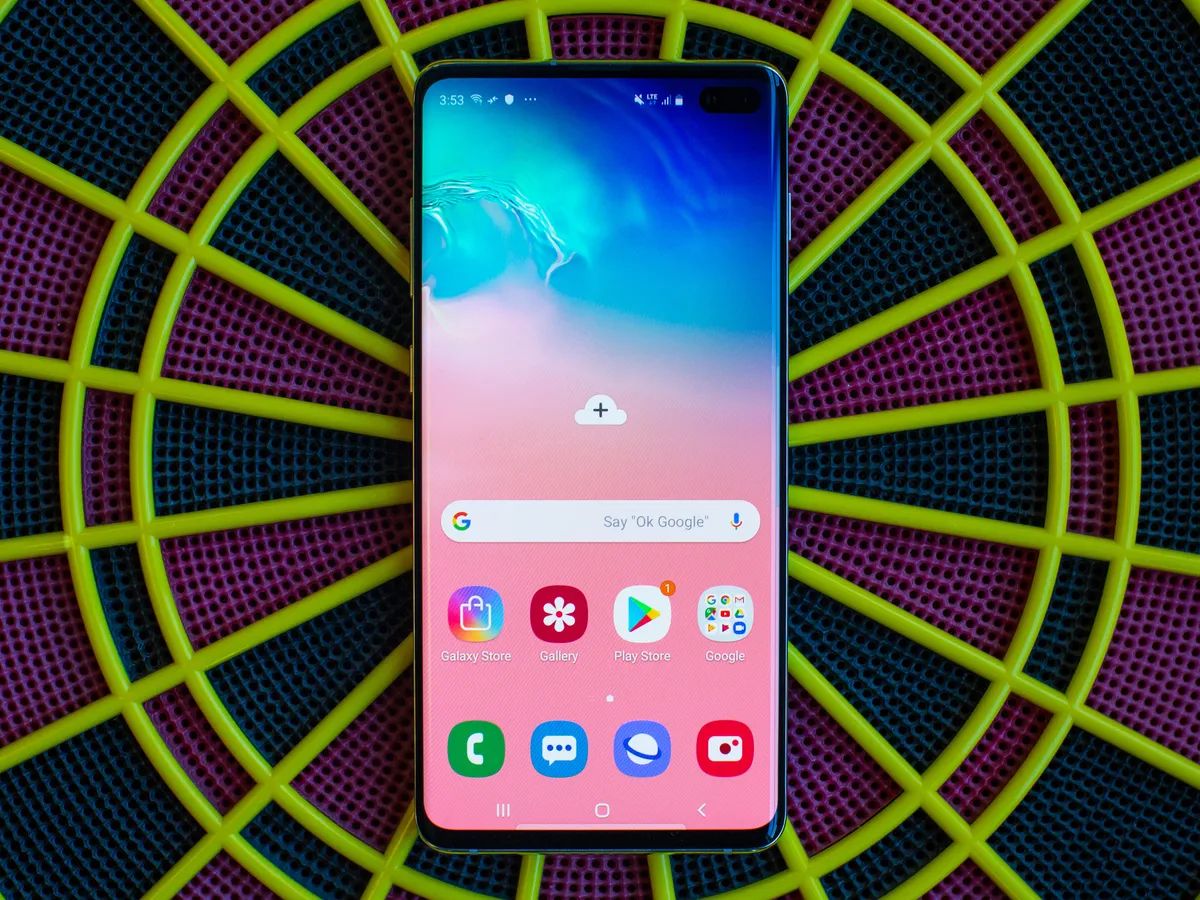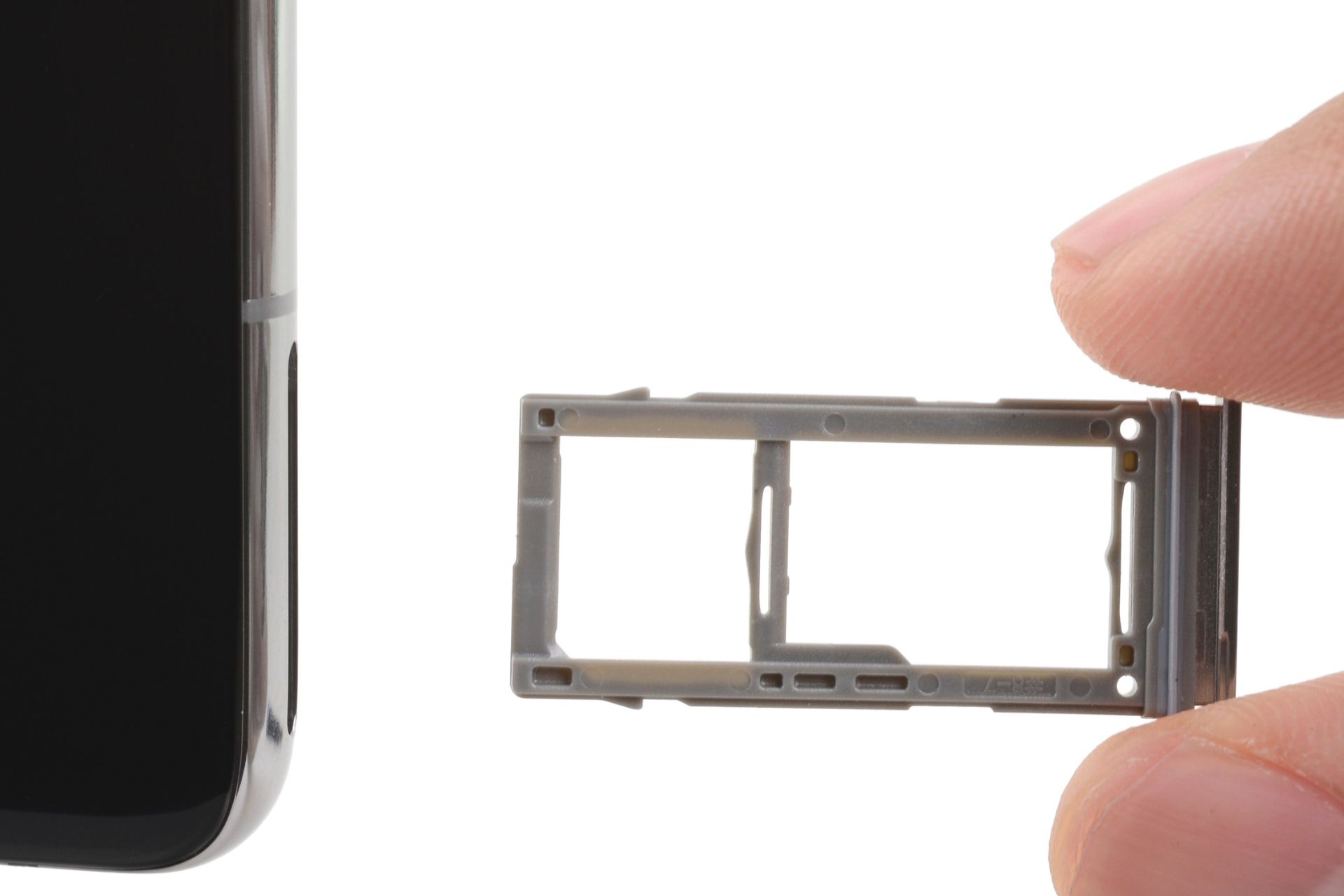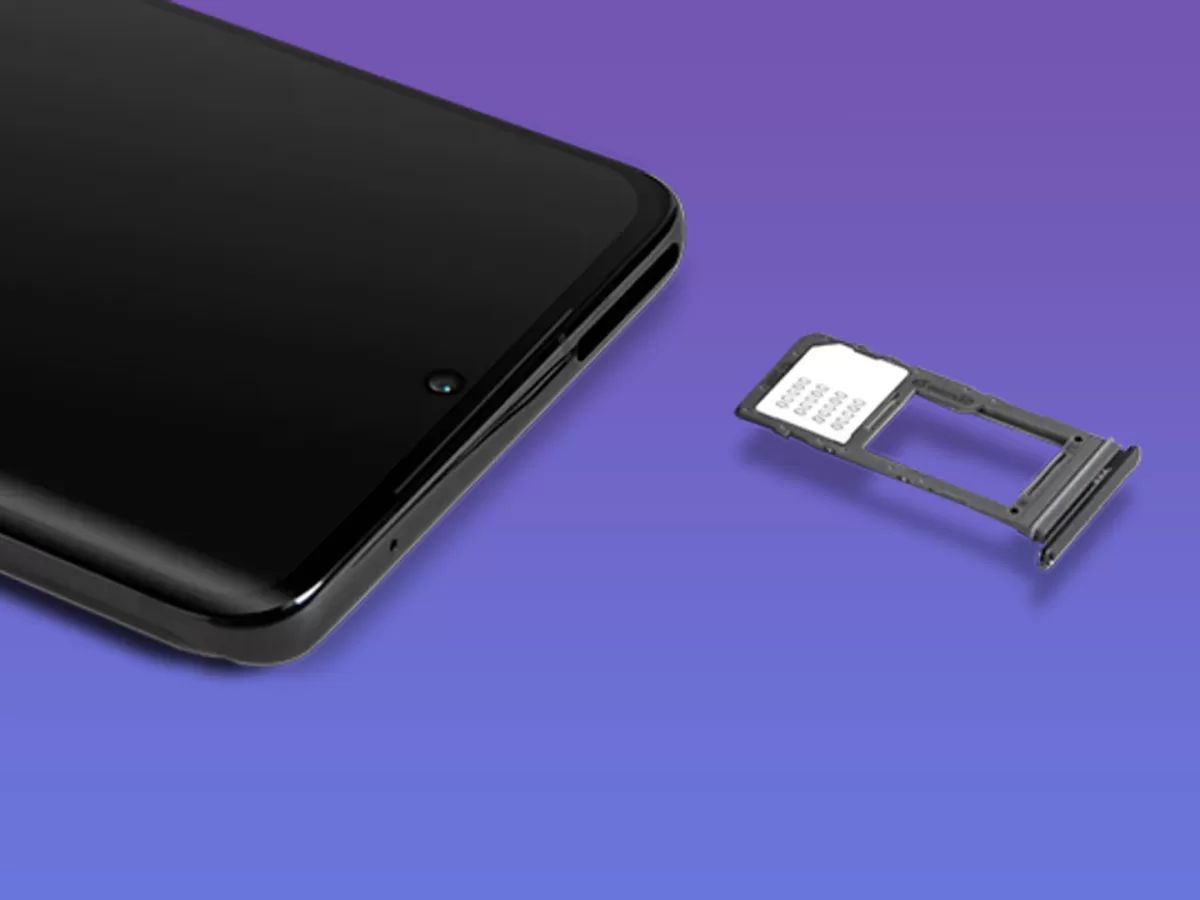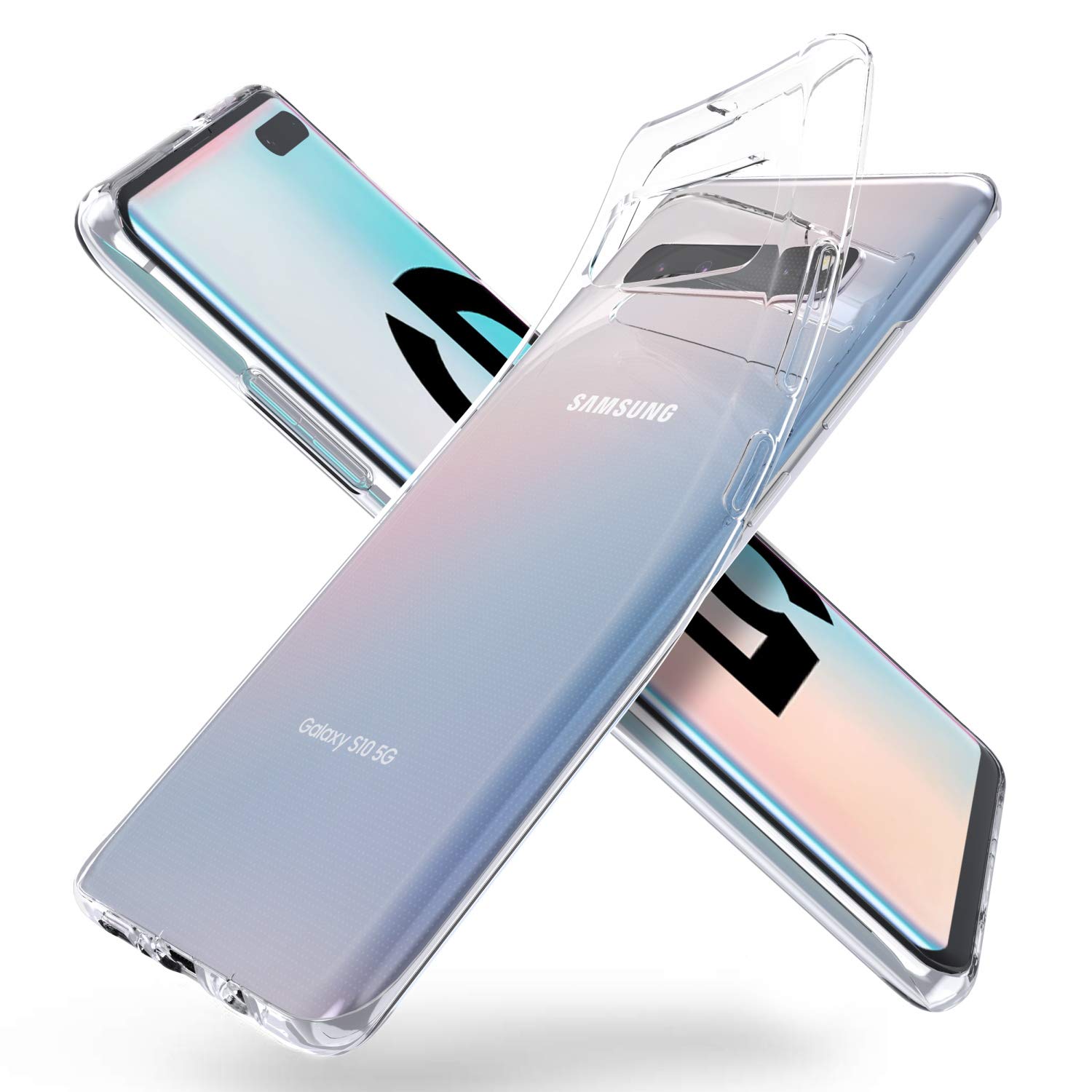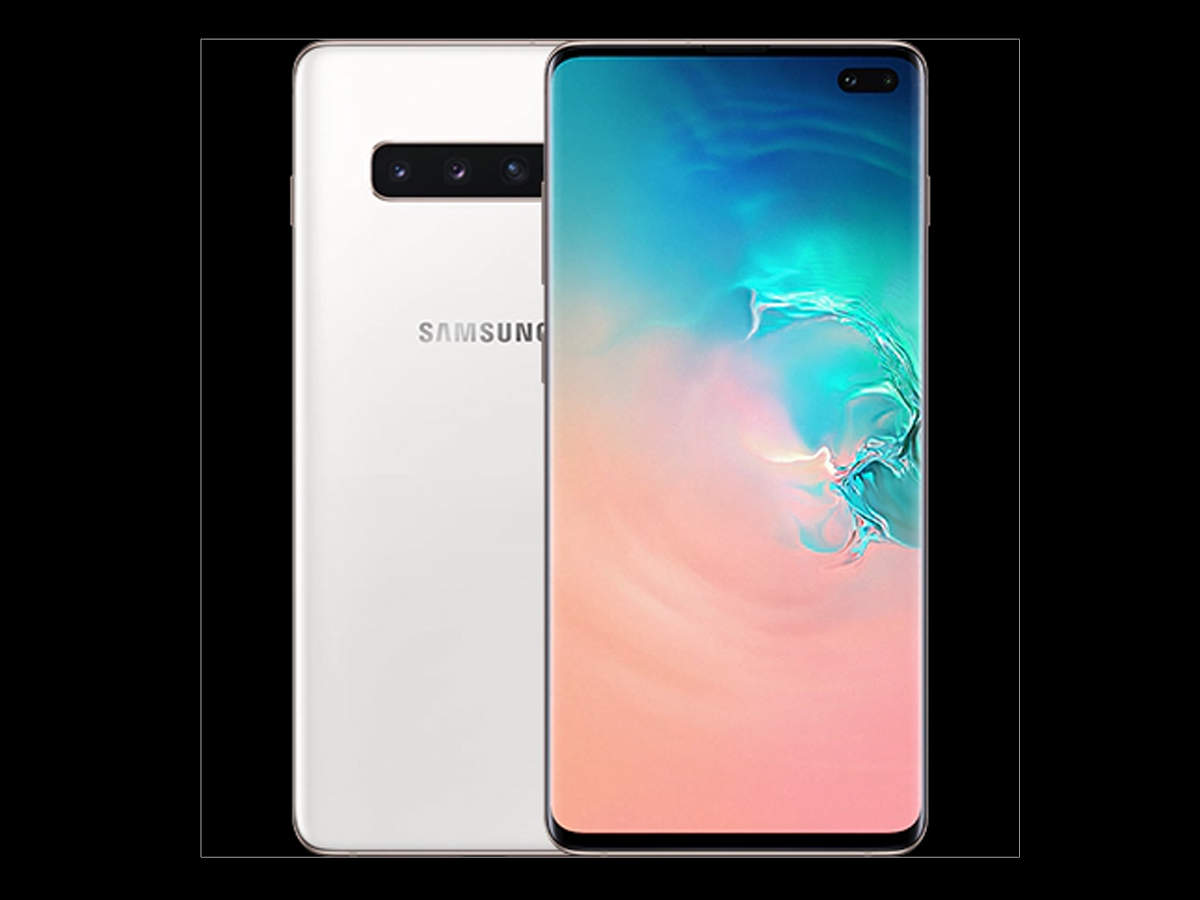Introduction
The Samsung Galaxy S10 is one of the most highly anticipated smartphones of the year. As the latest addition to the Galaxy S series, Samsung fans and tech enthusiasts alike are eager to get their hands on this flagship device. One of the factors that play a significant role in the overall user experience is the size of the device. In this article, we will explore the size of the Samsung Galaxy S10 and how it compares to its predecessors and competitors.
When it comes to smartphones, size does matter. The size of a smartphone not only affects its ergonomics but also impacts its display, weight, and overall usability. Samsung has always been known for producing devices with stunning displays, and the Galaxy S10 is no exception. However, with advancements in technology, the screen size and dimensions of smartphones have been steadily increasing over the years.
Before we delve into the specifics of the Samsung Galaxy S10, let’s take a moment to appreciate the evolution of smartphone sizes within the Galaxy S series. From the compact Galaxy S5 to the behemoth Galaxy S9 Plus, Samsung has catered to users with varying preferences. The Galaxy S10 continues this tradition of offering a range of sizes to suit different needs.
Whether you prefer a larger display for multimedia consumption or a more compact device for one-handed use, the Samsung Galaxy S10 has something to offer. So, let’s dive in and explore the size of the Samsung Galaxy S10 in detail.
Size Comparison with Previous Galaxy Models
The size of the Samsung Galaxy S10 can be best understood when compared to its predecessor models. Samsung has always been keen on making improvements and adjustments, taking into account user preferences and feedback. So, how does the Galaxy S10 measure up against its predecessors in terms of size?
First, let’s compare the Galaxy S10 with its direct predecessor, the Galaxy S9. The Galaxy S10 boasts a larger display, resulting in an overall increase in size. The S10 measures 149.9 x 70.4 x 7.8mm, while the S9 comes in at 147.7 x 68.7 x 8.5mm. The slight decrease in thickness of the Galaxy S10 makes it feel sleeker and more comfortable to hold.
For those who are concerned about the device’s weight, the Galaxy S10 fares well in this regard. It weighs around 157g, which is slightly heavier than the Galaxy S9 but still lightweight and manageable.
Now, let’s take a look at the larger variant, the Galaxy S10 Plus. The S10 Plus takes the size and dimensions up a notch, with measurements of 157.6 x 74.1 x 7.8mm. It is slightly taller and wider than its predecessor, the Galaxy S9 Plus, but still maintains a slim profile.
Compared to the Galaxy S9 Plus, the weight of the Galaxy S10 Plus has been slightly reduced. It weighs around 175g, which is quite impressive considering the larger display and additional features it packs. Samsung has managed to optimize the weight distribution, resulting in a device that doesn’t feel overly heavy or cumbersome.
Overall, the Samsung Galaxy S10 and S10 Plus are larger than their predecessors, but the increase in size is minimal and well-managed. Samsung has ensured that the devices remain ergonomic and comfortable for daily use, making it easy for users to transition from older models to the new ones without any major adjustments.
Display Size and Dimensions
The display size and dimensions of a smartphone play a crucial role in determining the overall user experience. The Samsung Galaxy S10 offers an impressive display that is immersive and vibrant, making it ideal for multimedia consumption and gaming.
The Galaxy S10 features a 6.1-inch Dynamic AMOLED display, with a resolution of 1440 x 3040 pixels. The screen is crisp and sharp, providing excellent clarity and detail. The display utilizes HDR10+ technology, which enhances color accuracy and contrast, resulting in a visually pleasing experience.
In terms of dimensions, the Samsung Galaxy S10 measures 149.9 x 70.4 x 7.8mm. The slim profile of the device ensures that it feels comfortable to hold and use, despite the larger display size. The bezels surrounding the screen are minimal, maximizing the screen-to-body ratio and providing an edge-to-edge display experience.
One notable feature of the Galaxy S10’s display is the ultrasonic fingerprint sensor embedded beneath the screen. This futuristic technology allows for convenient and secure biometric authentication, eliminating the need for a physical fingerprint sensor on the back or front of the device.
With its large display and compact dimensions, the Samsung Galaxy S10 strikes a perfect balance between providing an immersive viewing experience and maintaining portability. Whether you’re streaming videos, playing games, or browsing through social media feeds, the Galaxy S10’s display offers an immersive and enjoyable visual experience.
Weight
The weight of a smartphone is an important consideration for many users, as it directly impacts the device’s portability and comfort during everyday use. The Samsung Galaxy S10 strikes a good balance between a solid build and a manageable weight.
With its sleek and slim design, the Galaxy S10 weighs approximately 157g. While it is slightly heavier than its predecessor, the Galaxy S9, the weight is still relatively light considering the features and performance packed into the device. The solid construction of the device gives it a substantial feel without being overly heavy or cumbersome.
One of the contributing factors to the weight of the Galaxy S10 is its glass and metal build. The glass back not only adds to the overall aesthetic appeal of the device but also provides a premium look and feel. Moreover, the metal frame ensures durability and structural integrity. However, it’s important to note that glass-backed smartphones can be more prone to fingerprints and may require frequent cleaning to maintain their pristine appearance.
Despite its weight, the Samsung Galaxy S10 is still lightweight and portable, making it easy to carry in a pocket or bag without weighing you down. Whether you’re on the go or using the device for extended periods, the weight of the Galaxy S10 is optimized for a comfortable user experience.
Overall, the weight of the Samsung Galaxy S10 strikes a good balance between a solid build and user comfort. It manages to offer a sturdy construction without compromising on its portability, making it an ideal choice for those who value both durability and ease of use.
Screen-to-Body Ratio
The screen-to-body ratio is a key metric that determines how much of the front surface of a smartphone is occupied by the display. A higher screen-to-body ratio indicates a more immersive and bezel-less viewing experience. The Samsung Galaxy S10 excels in this aspect, offering a high screen-to-body ratio that enhances the overall visual experience.
With its minimal bezels and slim profile, the Galaxy S10 boasts an impressive screen-to-body ratio of approximately 88.3%. This means that a large portion of the front of the device is dedicated to the display, providing a more immersive and edge-to-edge experience compared to previous models.
The reduced bezels surrounding the display result in a seamless and uninterrupted viewing experience. Whether you’re watching movies, playing games, or browsing through your favorite apps, the Galaxy S10 maximizes the screen real estate to deliver stunning visuals.
The high screen-to-body ratio of the Galaxy S10 is achieved through various design elements. Firstly, the Infinity-O display features a small punch-hole cutout for the front-facing camera, eliminating the need for a traditional notch that can take up additional space. This design choice allows for a more immersive display while still maintaining the functionality of the front camera.
In addition, the curved edges of the display further enhance the screen-to-body ratio, seamlessly blending the display into the device’s frame. This design element creates an illusion of an even larger display and minimizes distractions from the edges.
Overall, the high screen-to-body ratio of the Samsung Galaxy S10 ensures that users can enjoy a more immersive and engaging visual experience. With its minimal bezels and clever design choices, Samsung has managed to maximize the display space and deliver a truly bezel-less experience.
Notch or Hole-punch?
When it comes to smartphone displays, one of the design considerations is whether to incorporate a notch or a hole-punch cutout for the front-facing camera. The Samsung Galaxy S10 takes a different approach from its predecessors and offers a hole-punch design, which has become increasingly popular in the smartphone industry.
The Galaxy S10 features what Samsung calls an “Infinity-O” display, which means it has a small circular cutout on the top right corner of the screen to house the front-facing camera. This design choice allows for a larger and more immersive display compared to the traditional notch found in previous models like the Galaxy S9.
By opting for a hole-punch design, Samsung manages to reduce the bezels and maximize the screen real estate. This means that users can enjoy a more immersive viewing experience, with content extending to the edges of the display without being obstructed by a notch.
The hole-punch design also offers a more symmetrical and aesthetically pleasing look. The small cutout blends into the display seamlessly, giving the impression of a larger, uninterrupted screen. Additionally, the placement of the hole-punch is deliberately chosen to minimize distractions while still maintaining the functionality of the front-facing camera.
Moreover, the hole-punch design allows for creative use of the notification bar. It can be positioned around the cutout, making it appear as part of the software interface rather than a separate element. This design choice adds a unique touch to the overall user experience.
While some users may still prefer the traditional notch or even a completely bezel-less design, the hole-punch display of the Samsung Galaxy S10 strikes a good balance between maximizing the screen space and maintaining a sleek and cohesive design.
Overall, the hole-punch design of the Samsung Galaxy S10 offers a visually appealing and immersive viewing experience, giving users more screen real estate without compromising on the functionality of the front-facing camera.
Device Thickness
The thickness of a smartphone is an important consideration for many users, as it affects the device’s overall form factor and comfort during everyday use. Alongside its impressive design and features, the Samsung Galaxy S10 boasts a sleek and slim profile that enhances its visual appeal and user experience.
The Galaxy S10 measures in at just 7.8mm in thickness, making it one of the thinnest flagship smartphones available. Samsung has made significant strides in reducing the thickness of the device compared to its predecessors, resulting in a more streamlined and lightweight feel.
The slim profile of the Galaxy S10 not only contributes to its sleek appearance but also adds to the ease of handling and comfort during one-handed use. With its reduced thickness, the device is less bulky and more ergonomic, making it easier to hold for extended periods without causing strain or discomfort.
In addition to its slim profile, the Samsung Galaxy S10 features a curved glass back that seamlessly blends into the metal frame. This not only enhances the overall aesthetics of the device but also contributes to a more comfortable grip and feel in the hand.
Samsung’s attention to detail in designing a thin and ergonomic device ensures that the Galaxy S10 is suitable for users who appreciate a lightweight and sleek smartphone. Whether you’re sliding it into your pocket or carrying it in a bag, the slim profile of the Galaxy S10 adds to its portability and overall usability.
Overall, the thin profile of the Samsung Galaxy S10 showcases Samsung’s commitment to delivering a device that is both visually appealing and comfortable to use. The reduced thickness, combined with the curved glass back, contributes to a premium and ergonomic smartphone experience.
One-Handed Use
One of the key considerations for many smartphone users is the ability to operate the device comfortably with just one hand. The Samsung Galaxy S10 offers a size and form factor that strikes a good balance between a large display and one-handed usability.
With its dimensions of 149.9 x 70.4 x 7.8mm, the Galaxy S10 provides a comfortable grip that allows users to navigate the device with ease using a single hand. The slim profile and curved edges contribute to a smooth and ergonomic feel, ensuring that all areas of the screen are within reach of the thumb.
Samsung has also implemented features such as the One-Handed Mode, which can be activated to shrink the display and make it more accessible for one-handed use. This mode reduces the need for users to stretch their thumb across the entire screen, improving the overall user experience.
In addition to the physical design, Samsung’s software optimizations further enhance one-handed usability. The user interface can be customized to place frequently used apps and functions within easy reach, reducing the need for multi-hand operation.
While the larger display of the Galaxy S10 may require some adjustment for users transitioning from smaller smartphones, Samsung has implemented features and design choices that prioritize the ease of one-handed use.
Overall, the Samsung Galaxy S10 strikes a balance between a large and immersive display and one-handed usability. The device’s dimensions, ergonomic design, and software optimizations make it comfortable to operate with just one hand, ensuring a seamless and user-friendly experience for users on the go.
Pocket Fit and Portability
When it comes to smartphones, portability is a key factor that many users consider. The size and form factor of the Samsung Galaxy S10 have been carefully designed to ensure that it remains pocket-friendly and easy to carry around.
The dimensions of the Galaxy S10, measuring at 149.9 x 70.4 x 7.8mm, make it compact enough to fit comfortably in most pockets. Whether you’re wearing jeans, trousers, or even a small purse, the Galaxy S10 easily slides in and out without feeling bulky or cumbersome.
In addition to its slim profile, the Galaxy S10 is lightweight, weighing approximately 157g. This makes it comfortable to carry for extended periods without causing strain or discomfort. Whether you’re walking, running, or commuting, the Galaxy S10’s portability ensures that it won’t weigh you down.
The sleek design of the Samsung Galaxy S10 further contributes to its overall portability. The curved edges and bezel-less display make for a seamless and streamlined device that easily slips into pockets and bags without any snagging or awkward protrusions.
Furthermore, the Galaxy S10’s sturdy build, combining a glass back and a metal frame, ensures that it is durable enough to withstand the rigors of daily use and travel. This provides users with peace of mind when carrying their smartphone around, knowing that it is both portable and resilient.
Whether you’re heading out for a quick errand or embarking on a long trip, the pocket fit and portability of the Samsung Galaxy S10 make it an ideal companion. It offers convenience and ease of transportation without compromising on its features or display size.
Overall, the Samsung Galaxy S10 is designed with portability in mind. Its slim profile, lightweight construction, and durable build make it easy to fit in your pocket and carry it with you wherever you go. The Galaxy S10’s portability, combined with its powerful features, ensures that you can take your digital world with you, no matter where you are.
Comparing Sizes with Competitors
When it comes to choosing a smartphone, size and dimensions are important factors to consider. The Samsung Galaxy S10 competes against other flagship smartphones in the market, and it’s worth comparing its size with some of its key competitors.
One competitor often mentioned in the same breath as the Galaxy S10 is the Apple iPhone Xs. The iPhone Xs has a slightly smaller display than the Galaxy S10, measuring at 5.8 inches. However, the overall dimensions of the iPhone Xs, 143.6 x 70.9 x 7.7mm, are quite similar to the Galaxy S10, offering a compact and pocket-friendly size.
Another notable competitor is the Google Pixel 3. The Pixel 3 has a smaller display compared to the Galaxy S10, measuring at 5.5 inches. This results in a more compact device, with dimensions of 145.6 x 68.2 x 7.9mm. If you prefer a smaller smartphone for one-handed use or portability, the Pixel 3 may be a more suitable option.
On the other hand, the Huawei P30 Pro stands out with its larger display. The P30 Pro boasts a 6.47-inch display, which is larger than both the Galaxy S10 and its competitors. However, the dimensions of the P30 Pro, 158 x 73.4 x 8.4mm, are also larger, making it a device that may require more effort to handle comfortably with one hand.
It’s important to note that sizes and dimensions alone do not determine the overall usability and experience of a smartphone. Features, software, and user preferences also play a significant role. It’s recommended to try out different devices in person to determine which size fits your needs and preferences the best.
In summary, the Samsung Galaxy S10 competes against various flagship smartphones in terms of size and dimensions. While it falls somewhere in the middle in terms of display size, its dimensions strike a balance between portability and a comfortable viewing experience. It’s always a good idea to consider different options and compare sizes to find the smartphone that suits your specific needs and preferences.
Conclusion
The size of a smartphone plays a crucial role in providing a comfortable user experience. The Samsung Galaxy S10 offers a well-balanced size and dimensions that cater to a wide range of users. With its sleek design, immersive display, and portability, the Galaxy S10 sets a high standard for flagship smartphones.
The size comparison with previous Galaxy models showcases Samsung’s dedication to offering a range of sizes to suit different preferences. The Galaxy S10’s display size and dimensions provide an immersive visual experience without compromising on portability.
The device’s weight and thickness contribute to its overall comfort and ease of use. The Galaxy S10’s slim profile and lightweight construction make it comfortable to carry and use for extended periods, while still maintaining a sturdy build.
The screen-to-body ratio and the hole-punch design of the Galaxy S10 maximize the display space, minimizing distractions and providing an immersive viewing experience. Furthermore, the device’s slim profile enhances its one-handed usability, making it convenient for daily tasks and on-the-go use.
The pocket-friendly size and overall portability of the Galaxy S10 make it a practical choice for users who are constantly on the move. Whether you’re slipping it into your pocket or carrying it in a bag, the Galaxy S10 offers a perfect balance between a compact form factor and an impressive display.
When comparing the Galaxy S10 with its competitors, it becomes evident that the device offers a strong balance of size and functionality. While other smartphones may have different display sizes and dimensions, the Galaxy S10’s design choices and optimization ensure a seamless and user-friendly experience.
In conclusion, the Samsung Galaxy S10’s size and dimensions make it a standout device. With its stunning display, comfortable form factor, and portability, the Galaxy S10 offers an excellent smartphone experience for users who value both visual immersion and ease of use.







